|
In last weeks post (here), I broke down the rules that govern "Right Hand Stride" in clawhammer banjo playing and gave an example of breaking these rules to catch the melody that the fiddle plays in "Angeline the Baker." This week I'll build on that approach and show you another trick for breaking right hand stride using the Jay Ungar tune "Round the Horn." Before I get too deep into today's post, lets review the aforementioned rules: Rule 1 for maintaining right hand stride: The index finger of the right hand moves towards the strings on every beat; the thumb never plays notes on the beat. Rule 2 for maintaining right hand stride: The index finger is never used to play notes between beats; these notes should be played with the thumb of the right hand, with a left hand pluck, or by hammer-ons/pull-offs from notes played on preceding beats. Rule 2a) if the note on an "and" beat is on a lower string than the preceding note (or if the preceding beat contains a brush, cluck, or ghost note) this note should be played with the thumb of the right hand, or by plucking the string with the left hand. Rule 2b) if the note on an "and" beat is at a higher fret of the same string of the preceding note, this note should be played with a hammer on. Rule 2c) if the note on an "and" beat is at a lower fret of the same string of the preceding note, this note should be played with a pull off. Rule 2d) if the note on an "and" beat is on a higher string than the preceding note, this note should be played by plucking the string with the left hand. Now a bit on the tune: fiddler Jay Ungar is best known for writing "Ashokan Farewell," which was prominently featured in Ken Burns' documentary TV series The Civil War; I'm not too embarrassed to say that I assumed "Ashokan Farewell" was a genuine Civil War-era fiddle tune when I first heard it, though Jay Ungar actually wrote it in the 80's. "Round the Horn" is another Jay Ungar original that frequently makes it way into Old Time jams alongside the classics. I first heard it at a local jam after moving to Michigan and its one of those rare 4/4 fiddle tunes like "Coleman's March" and "Seneca Square-dance" that actually sounds best at a moderate tempo. The guitarists at the jam love "Round the Horn" because, though the tune is in G major, they end both the A and B parts on a heavy-handed E minor chord; definitely makes for a fun tune! All of that being said, "Round the Horn" doesn't really "fall naturally" on clawhammer banjo, primarily due to right hand concerns. Figure 1 shows a phrase from the A part that provides an example of what I'm talking about. Note that as with the majority of my G tunes, I play "Round the Horn" in Old G (gDGDE; post on the logic behind this decision here): Figure 1 - A tricky phrase from the A part of "Round the Horn" by Jay Ungar. Lets start by talking about the last three notes of the phrase (i.e. the stuff that starts on the 2+ beat above). Based on what I talked about last week (once again, here) you can probably guess how I'll handle this stuff: Figure 2 - Breaking stride in the 2nd half of the "tricky phrase' shown above. The star above the staff indicate that this note should be played with the index finger; this note breaks right hand stride. To review, if we were playing the phrase in Figure 2 "in stride" we'd put a ghost note on beat 2, use a drop thumb to get the note on the following "and" beat (beat 2+), and use our index finger to play the note on beat 3. However, all of these left hand shenanigans strike me as a bit of unnecessary pageantry; in a move similar to what I did in Figure 8 last week, I've chosen to use a fairly standard pull off that breaks stride by starting between beats (i.e. on an "and" beat). Now, lets take a look at the first two notes in Figure 1. To play these notes "in stride" we'd play the first note with our index finger (Rule 1) and the second note with a left hand pluck (Rule 2d). See Figure 3 below: Figure 3 - using a left hand pluck to avoid breaking stride in the second note of Figure 1. I can tell you're impressed with my creative solution for designating when to use a left hand pluck. As I mentioned last week, I don't really use left hand plucks in my playing if I can avoid them. However, I mind them less when the offending note and the one that precedes it are both open strings, because the left hand is basically sitting there un-occupied on the preceding beat, available for plucking when needed. In the case shown in Figure 3, you're holding down a fretted note on the 1 beat and then you've got to figure out how to pluck the open 2nd string on the 1+ beat. I have yet to mention the left hand position for any of the tabs above (click here if you don't know what I'm talking about...): this tab is best played by covering frets 2-5 with the index, middle, ring and pinky fingers of your left hand without skipping a fret. Using this hand position, you'd be holding down the note beat 1 with your ring finger, making your index available for plucking the string on the 1+ beat. While this can be done, I do find it a bit awkward; also I should point out that 2 fretted on adjacent string notes become really difficult to play in this manner. Before talking about how I break the rules to play these notes, let me give you a few more non-rule breaking alternatives (I should mention here that the note on the 1+ beat is a "D"....just easier to talk about it this way): Figure 4: Using a hammer-on to get the D on the 1+ beat. Figure 5: Using a drop thumb to play a low octave D on the 1+ beat. The brackets indicate that the note should be played with the thumb of the right hand. Figure 6: Adding in a 5th string pull instead of playing the D on the 1+ beat. I've used all of the ideas from Figures 4-6 in my playing at some point. Figure 4 has the advantage of actually staying true to the melody. However, it involves a slightly obnoxious left hand position shift (you'd play the 4th fret with your index finger and the 7th fret with your pinky) followed by a run back down the neck to get the note on the 2+ beat. Figure 5 actually involves an alteration of the melody by moving the D down an octave, where it is easily reached via a drop thumb. This actually sounds OK when you're playing in unison with a fiddler, but its a little strange when playing alone. Figure 6 is kind of an admission that the subtleties of this melody are beyond our grasp as clawhammer players; the 5th string pull just fills melodic space. But, we can simply break the rules and get the note we really want as follows: Figure 7 - Breaking stride to get the D note on the 1+ beat. As with the note on the 2+ beat, the star above the staff indicates that this note should be played with the index finger, thereby breaking right hand stride. So last week (sigh, here), I introduced a particularly notey phrase from "Temperance Reel" and toyed with the idea of playing every note with the index finger of the right hand. However, I mentioned that this approach would necessitate moving your hand twice as fast as indicated by Rule 1, which kind of excludes it from being useful at high speed. Playing 2 eighth notes in a row (as shown in Figure 7) seems to have this same issue - so how do we solve this? We pluck both strings in a single movement. To explain: Figure 8 - A poorly drawn explanation of how to accomplish our latest rule breaking maneuver (shown in Figure 7). For the figure on the left, pretend you're looking down your banjo neck from the nut to the bridge...and that every part of the banjo other than the strings and bridge has disappeared for some reason. For the figure on the right, the circled numbers represent cross-sections of strings 1-5 and the line at the bottom represents the fingerboard. If you look at the left side of Figure 8, you'll see a "big picture" explanation of what you're doing for the first two notes of Figure 7. While the right hand motion of a clawhammer player goes "downward" towards the strings when plucking, typically nothing happens on the way back up (in fact, you've likely trained yourself to avoid undue noises when re-setting your hand for the next on-beat strike). However, you could use the "upward" portion of this motion to pluck the adjacent string and get another note! In this sense, you're almost not breaking stride....but I'll continue to talk about it that way. This does seem like it requires a high amount of right hand control however - how would you do this "in the moment?" The right side of Figure 8 gives you a trick to rein in your right hand motion and accomplish this pretty simply: aim your initial downward strike towards the next string over (in this case the 2nd string) - pretend like this string is a wall and make sure you hit it! You'll strike the 3rd string along the way to this collision, then simply lift up your hand while continuing your momentum and you'll end up plucking the second string as well. This pluck will likely be fairly light in comparison to the note on the 1 beat, but thats just fine! Amazingly, I've gotten this move to the point that I can even do it at fairly high speed - I'm sure you can get there too! I guess its time to introduce the actual tab here: Unfortunately, I'm not in a position to get any recording done this week so there's no audio to add here; my apologies, I'm going to try and add a recording at a later date. Hopefully the dissection of Figure 1 will help you get through the tab however: that phrase appears in the 2nd measure of the A part, and the 2nd and 4th measures of the B part. There is other "rule breaking" peppered throughout the tab as well, most of it similar to what we did with "Angeline the Baker" last week. However, there is one more bit of rule breaking in the 5th measure of the B part that I'll highlight before I go: Figure 9 - 3 pull-offs in a row in "Round the Horn." So, we break stride in Figure 9 by using our index finger on the 2+ beat, but we continue to break the rules by stringing 3 notes behind this first note in a series of pull-offs; during this move, my right hand just stops moving altogether while my left hand does all the work. It would be easy to break this phrase in half by striking the 1st string on both the 2+ and 3+ beats and using pull offs to get the notes on the following beats, and I'd encourage you do try that out as well. However, when I play this tune, the series of pull-offs in Figure 9 just kind of happens naturally; therefore I thought I may as well put it in the tab : )
I've got a fairly busy Sunday (I'm down in VA with family for thanksgiving) so I thought I'd post a day early this week - hope anyone reading this had a great holiday!
2 Comments
3/9/2024 08:26:35 am
I wanted to express my gratitude for your insightful and engaging article. Your writing is clear and easy to follow, and I appreciated the way you presented your ideas in a thoughtful and organized manner. Your analysis was both thought-provoking and well-researched, and I enjoyed the real-life examples you used to illustrate your points. Your article has provided me with a fresh perspective on the subject matter and has inspired me to think more deeply about this topic.
Reply
I wanted to express my gratitude for your insightful and engaging article. Your writing is clear and easy to follow, and I appreciated the way you presented your ideas in a thoughtful and organized manner. Your analysis was both thought-provoking and well-researched, and I enjoyed the real-life examples you used to illustrate your points. Your article has provided me with a fresh perspective on the subject matter and has inspired me to think more deeply about this topic.
Reply
Leave a Reply. |
-----
|
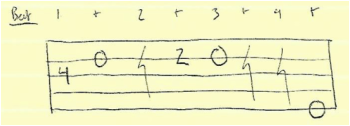
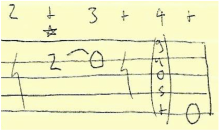
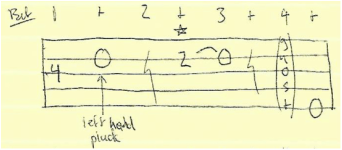
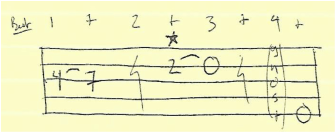
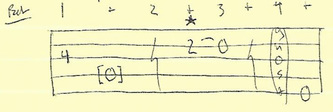

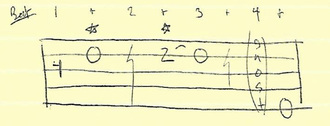
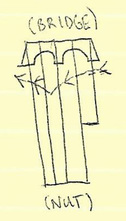
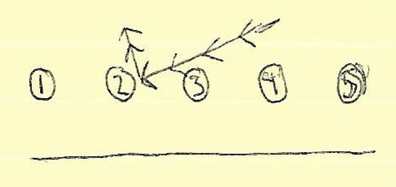

 RSS Feed
RSS Feed